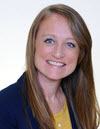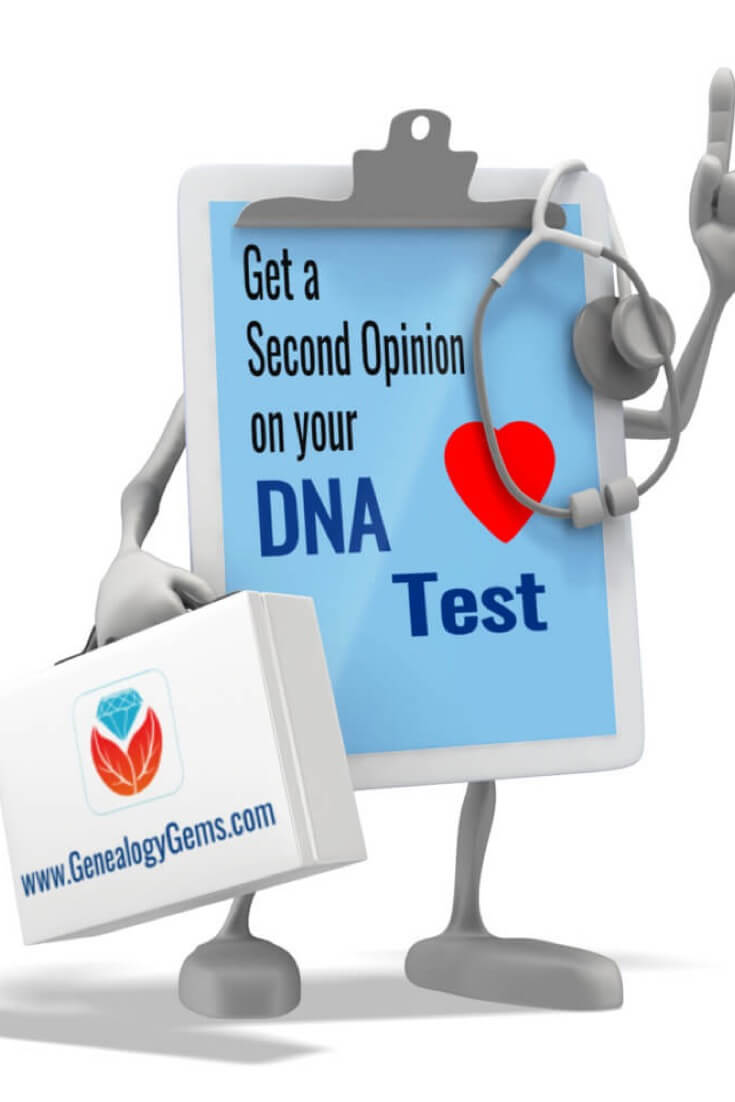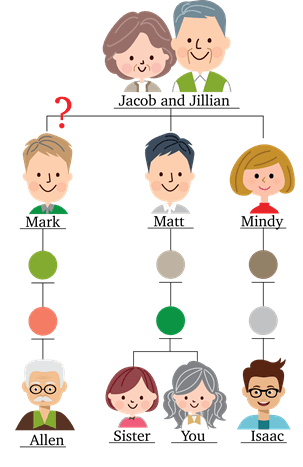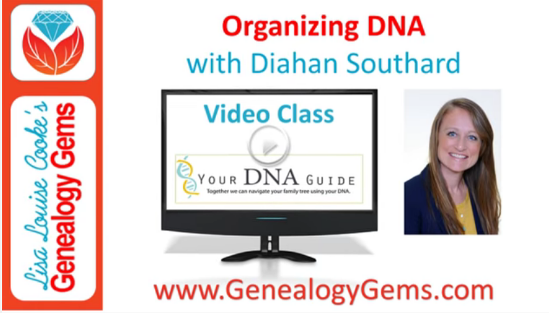A second opinion on your DNA test can help your genetic genealogy research in several ways. Your DNA Guide Diahan Southard proposes several scenarios that can help you look at your DNA test results in a new way. (Retesting may not even be necessary!)
Second Opinions on a DNA Test
“Get a second opinion.” That’s the advice we hear about our healthcare and the tactic my kids use when one parent says, “No.” But it should also be a strategy employed in our genetic genealogy pursuits.
Second opinions come in multiple varieties. You can move your DNA test results between companies. For example, while you can’t transfer into 23andMe or AncestryDNA, you can transfer your autosomal DNA results out of all companies and into Family Tree DNA, MyHeritage, and now Living DNA. (Click here for step-by-step instructions.) This transfer gives you a second opinion on your ethnicity results. We have talked about how those numbers can differ between companies and your “real” values may be somewhere in between.
However, you may also want to get a second opinion for your match page. Because of different analysis methods at the various testing companies, the same match might be reported to share a different amount of DNA. Those differences should be slight, and shouldn’t influence your relationship. Remember that the amount of DNA you share is measured in centimorgans (cMs), and generally speaking, the more cMs you share, the closer your relationship. (Click here to read more about centimorgans.)
That total amount of shared DNA can help us with another kind of second opinion. Because DNA inheritance is a random event, the amount of DNA two cousins receive from their shared 2X great grandparents can be very different. For example, according to data collected form the Shared cM Project (SCP) individuals who are documented third cousins vary widely in the amount of DNA they share. They may share as much as 253 cM but as little as 6 cM!
A Second Opinion Case Study
Let’s look at an example to see how a second opinion might be helpful in solving a genealogical mystery. In the image we see:
- you
- your sister
- your matches Isaac and Allen
Your match Allen believes that his ancestor Mark is actually the eldest child of Jacob and Jillian. If this is the case, Allen would be your third cousin.
However, when you look at the total amount of shared DNA, you and Allen share only 48 cMs, which is below the 74 cM average for third cousins and fits better in the range of fourth cousins. Your sister is sharing slightly more, at 54 cM. So along with Allen, you begin forming a hypothesis that his ancestor Mark is actually a nephew to Jacob and Jillian, making your common ancestor either Jacob or Jillian’s parents.
However, you then get a new match in Isaac, who is a known third cousin, also a descendant of Jacob and Jillian, and you are sharing 86 cM. You then ask Isaac to tell you how many cMs he is sharing with Allen and he reports a whopping 92 cM! If we find the average amount of shared cMs between you, your sister, and Isaac and Allen, we get 65 cMs, which is much closer to the 74 cMs we would expect if you were truly 3rd cousins. In this case we could say that the genetics supports a connection between these individuals at Jacob and Jillian.
While you could still be 4th cousins instead of 3rd, having a second opinion in your sister, and then a third opinion in your known cousin can be very helpful in determining your actual relationship to Allen. Of course, the only way to know for sure if Mark is the child of Jacob and Jillian will be to find the genealogical paper trail. But in the meantime, you can continue to look for more descendants of this couple who have been DNA tested, and get a more complete picture of your genetic relationship.
More Help with Your DNA Results
- MyHeritage DNA matching update and a new chromosome browser
- Why do DNA testing for family history if you already “know” your tree
- Organizing Your DNA Matches Premium video (Exclusively for Genealogy Gems Premium eLearning members–membership now includes over 20 DNA videos from Diahan Southard! Click here to learn more)

About the Author: Diahan Southard has worked with the Sorenson Molecular Genealogy Foundation, and has been in the genetic genealogy industry since it has been an industry. She holds a degree in Microbiology and her creative side helps her break the science up into delicious bite-sized pieces for you. She’s the author of a full series of DNA guides for genealogists.
Disclosure: This article contains affiliate links and Genealogy Gems will be compensated if you make a purchase after clicking on these links (at no additional cost to you). Thank you for supporting Genealogy Gems!








It seems that the link to learn about transferring DNA only talks about MyHeritageDNA, Family TreeDNA & GEDmatch. I poked around the LivingDNA website and found info on uploading DNA data in their section on their ‘One Family One World’ program (https://www.livingdna.com/one-family/research). It is not clear they are ready yet to provide matches saying generally ‘mid 2018’. I didn’t dig deeper to be confirm this assumption.